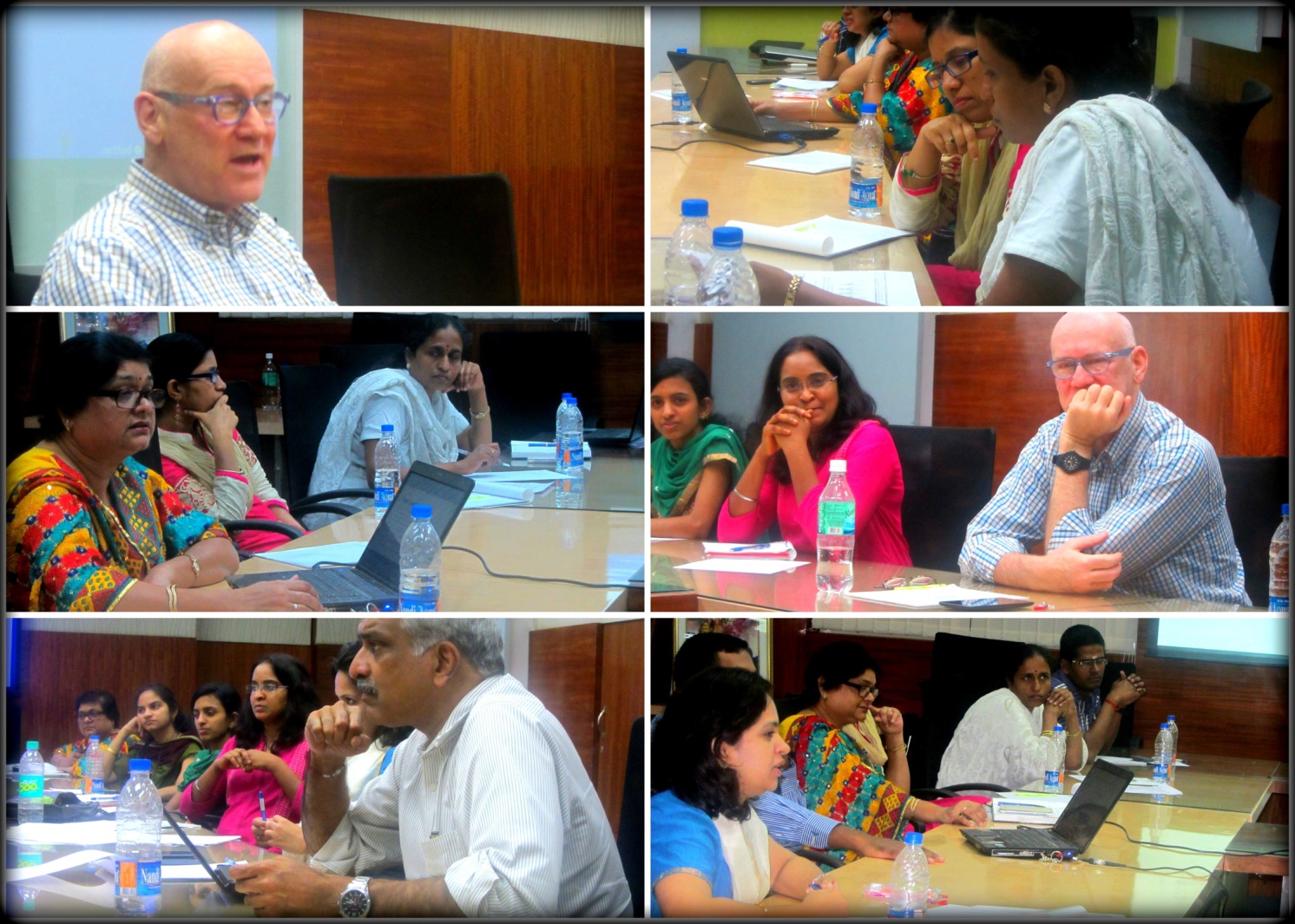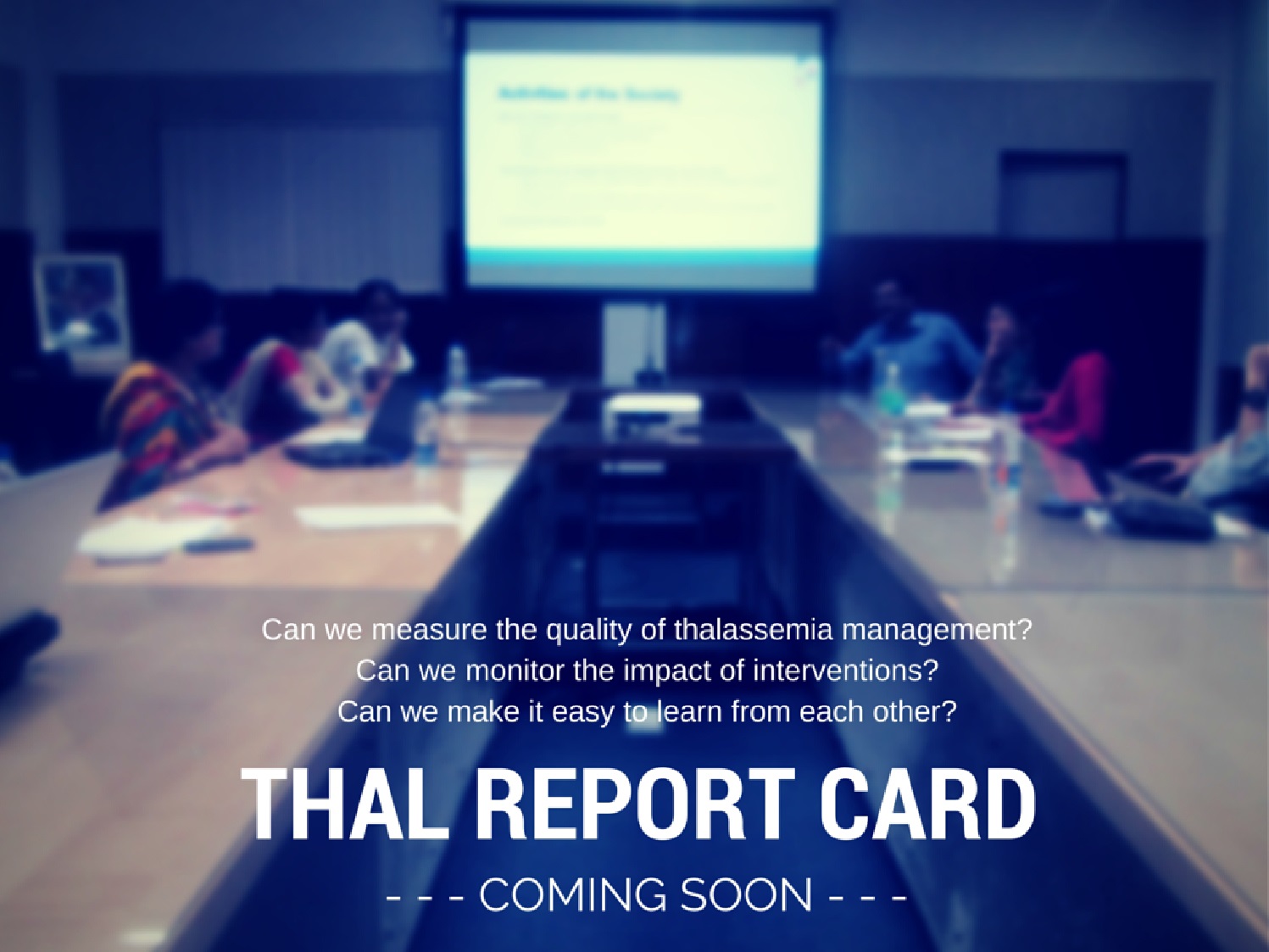On 19th February 2015 a group of people with very high interest in improving care and management for thalassemia came together in a room to explore the next steps for thalassemia management.
The intention was to share and to learn in an environment which maximizes learning and fosters cooperation.
The participants were
- Dr Lawrence Faulkner from Cure2Children Foundation, Italy
- Dr Pooja Gujjal and Pushpa from Indira Gandhi Institute of Child Health
- Dr Sumithra R and Sister Ashwini from Project Samraksha Rashtrotthana
- Dr Suman Jain and Dr Vani Chaduvala from Thalassemia and Sickle Cell Society, Hyderabad
- Mr Vinay Sheety from Think Foundation, Mumbai also representing Lokmanya Tilka General Hospital, Mumbai (Dr Mamta Manglani had to drop out at the last minute)
- Mr Ganapathi from JSS Trust and of-course Sankalp volunteers.
The nice board room was made available, thanks to Rashtrotthana Parishat which set the ambiance right for the intense talks which were lined up for the day
The meet started with an exchange of the work done at each of the centres in a predefined objective format. This initial presentation also enabled sharing of the biggest strengths and challenges faced by each centre. There was rich discussion on the reasons for varying time of hospitalization, availability of blood components, access to chelators, complication prevalence and tracking etc.
A significant outcome of the rich debate was that the centres agreed to come up with a wholesome format for quantifying the performance of the thalassemia care centres. We decided to call it the Thal Report Card. This will allow centres to

objectively compare and benchmark their performance with their peers and with the best practices. The group strongly felt the need for this tool top bring in clarity on the areas which needed most attention and see what interventions are working over a period of time. Team Sankalp and Jagriti Innovations are working upon this tool.
Another major discussion for the day was that on use of Hydroxyurea for beta-thalassemia major. The participants shared their experiences with the use of drug and there seemed to be a consensus on the need for greater use and larger multi-cenmtre study of hydroxyurea. Team Samraksha also shared their interim results on use of hydroxyurea which were very encouraging.
The next segment of the discussion was about curative options for thalassemia. The current status of BMT as a cure for thalassemia was discussed in detail. The sources of stem cells and their relative outcomes were discussed. So were the various protocols involved in transplant. The role of the management clinics in preparing the kid for the transplant and the followup was also discussed. The Cure2Children experience on enabling B.M.T. in developing countries with outcomes comparable to the west was also shared. Dr Faulkner stressed on the need for proper management and the need to involved centers which involve in regular management of thalassemia for the success of the bone marrow transplantation.
Seven hours of intense discussion should have left the participants all drained up. To the contrary, everyone was charged up and all set to put into practice what they gained out of the discussion. The meet set the right tone for the enhanced cooperation and networking between various thalassemia management centers. The need for such small focus group meetings periodically was felt and Sankalp promised to facilitate the same.

